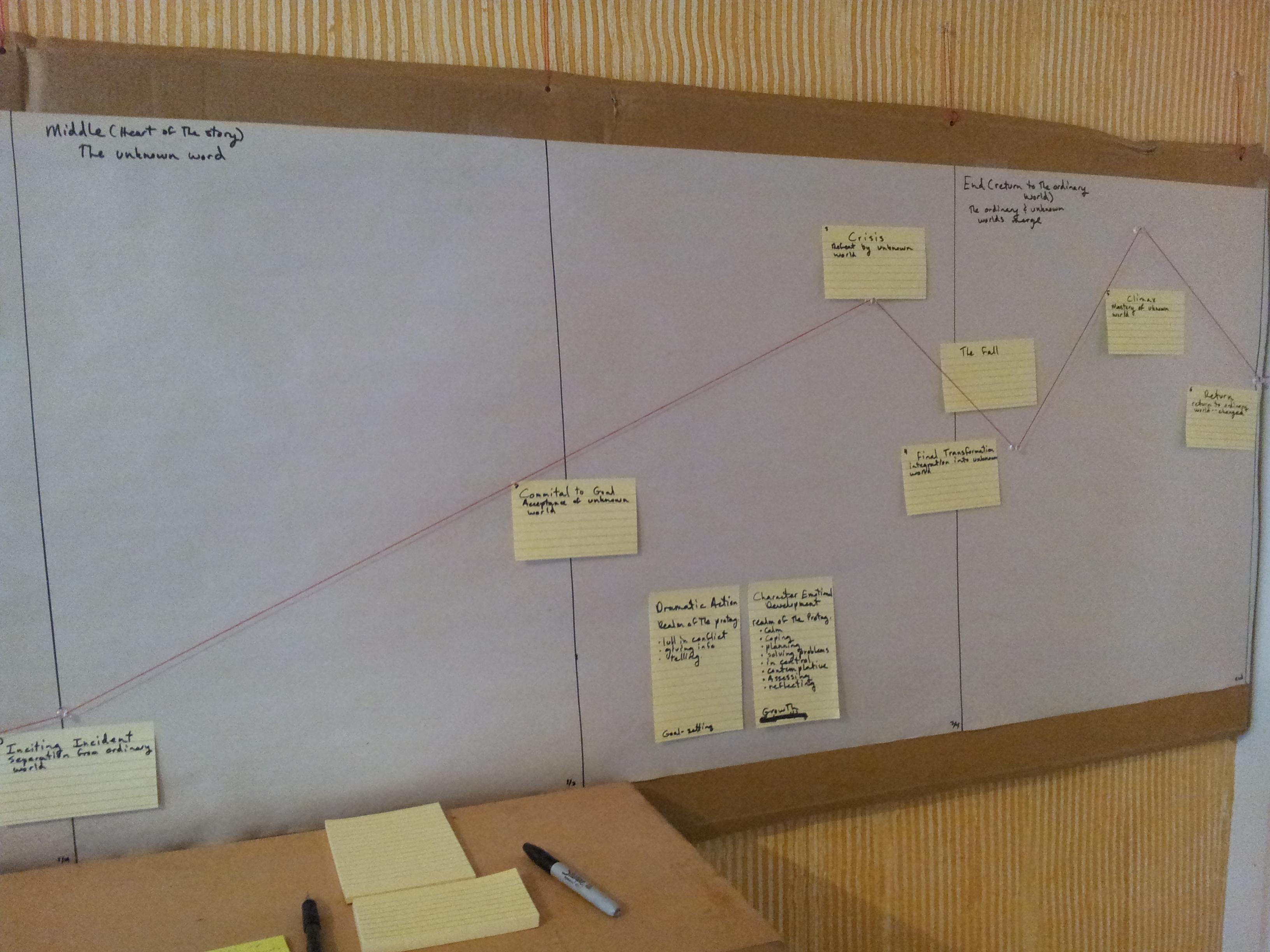
I’m not going to lie to you: Middles are hard.
They are still hard for me, almost twenty years since I wrote my first one. And I have to admit I was kind of dreading writing this post. How am I going to tell all of you how to write a great middle if I still struggle with it?
Imagine my delight when I realized that the topic of the Upstart Crows Writer’s Association meeting the night before I was to write this post was “How to Avoid the Saggy Middle,” presented by the prolific Pamela Beason. She writes mysteries and romance with a dash of humor and a big dose of suspense. Pam has written a lot of books, so she was the perfect expert to turn to for help.
Before I summarize some of her great suggestions and some of those offered by other Crows members last night, I want to pose a question:
Why are middles so hard?
In my experience, this is what happens: I have a great idea for a story. I usually know how it begins (the inciting incident we went over yesterday) and I usually have a pretty good idea how it ends. Not necessarily a crystal clear idea, but at least some idea. I mean, we kind of all know how every story is going to end, right? The hero will defeat the bad guy, the detective will solve the crime, the girl will get the guy (genre fiction) or the main character will learn something important about themselves (literary fiction). The trouble is getting from the inciting incident to the final climax and resolution. What needs to happen between here and there? How does the story unfold?
While I still struggle with middles, they became easier for me when I started to see them, just recently in the process of writing Dream of a City of Ruin, as nothing more than the obstacles between the main character and his or her goal. Instead of asking the question, how do I get Stasia to the city, I started to ask the question: what obstacles lie between Stasia and the city? How can I mine those obstacles for action and tension?
Adding or enlarging obstacles to improve your middle was among the great suggestions Pam Beason made last night. The thing she said that stuck out the most to me was: A lot of beginning writers will have a main character spend the middle dithering about what to do.
Yeah, I’ve done that. A few times. And it does not make for an engaging story. Indecision is not an obstacle.
The trick to writing a great middle is to put enough interesting obstacles in your protagonist’s path to keep the reader engaged and rooting for them to succeed. Make sure the protagonist is focused on the main goal and in motion toward it, but being obstructed at every turn.
Obstacles can be many different things. They will vary by genre; the obstacles in a romance book will be different from the obstacles in a literary book. The obstacles for Frodo are far different from the obstacles for Sherlock Holmes.
The most engaging obstacle you can include in your writing, in my opinion, is the obstacle of conflicting motives between your protagonist and another character. Often these are the villain’s motives, but how much more interesting when they are another good character’s motives? If the hero’s sidekick wants something different from the hero, this sets up a vibrant tension and an obstacle that is harder for the protagonist to overcome.
The other type of obstacle you might include are character-independent obstacles. These can be everyday events, such as traffic or illness, or they can be large natural disasters. While these kinds of obstacles can be perfectly valid, another Crows member urged caution–use them incorrectly and they can seem unrealistic to the reader, which takes the reader out of the story.
I would say that if you want to use a natural obstacle, make sure it makes sense. If there is going to be a hurricane in your story, plant the seeds early on so that when it hits, the reader isn’t scratching their head. Make sure the disaster matches the setting and you’ve alluded to the possibility of such a disaster enough in the beginning.
While obstacles are what I struggle with the most, there are a few other things that Pam pointed out might be causing your middle to sag.
1. You’ve lost sight of the character’s goal. What is your story about? Can you summarize it in one sentence? Does your middle veer from the main character’s primary goal? Maybe you’ve gotten off track; review your planned ending and make sure events are heading in the right direction.
2. You gave away too much in the beginning. If you’ve revealed too much backstory and information up front, you may have killed an opportunity for suspense later on. I would caution though not to confuse surprise with suspense. You need to reveal enough information early on so that readers aren’t confused and aren’t completely surprised, to the point of being taken out of the story, when the bomb drops.
3. Your storyline is too simplistic. Believe it or not, I don’t have trouble with this one. If anything, my problem is keeping the storyline from getting so complex I can’t keep it organized. But I can see how someone might. Pam’s advice is to add a subplot or two. Another suggestion was to add in more POV characters. If neither of these work, I would suggest thinking about whether you really have enough material in your story to write a full novel. Perhaps it can actually be told in a short story or novella.
4. You’re trying to force a plot to fit in an outline that doesn’t work. This is a really important one and I have actually struggled with this a lot. My new method of summarizing the story before I draft fixed this problem, because I am able to work out plot issues while they are still on a micro-scale (not drafted into 100K words or more). Pam suggests that often a secondary character is trying to take over the lead role, or maybe a subplot is actually your main plot. Her advice–let the story unfold how it wants to, instead of trying to force it to continue to match the outline.
If all else fails, be sure to run the problems you are having by other writers in your community. Ask them specific questions. One of my favorite suggestions from Pam was “What do you want to see happen next in this story?” Ask this, perhaps, after having them read the chapter right before things start to sag.
If you can, talk the story out with someone else and brainstorm ways to solve the issues it’s having. Sometimes just bouncing your thoughts off another person can reveal the heart of the problem.
If all else fails, treat the middle just like the beginning. Write the climax, then ask yourself, what does the reader need to know/feel/experience in order for this ending to mean something to them?
Tomorrow: 101 TIWIK #17: The End.
This post is part of a series of 101 Things I Wish I’d Known Before I Wrote My First Book. Start reading the series at the beginning.




2 thoughts on “101 TIWIK #16: Stuck in the Middle”